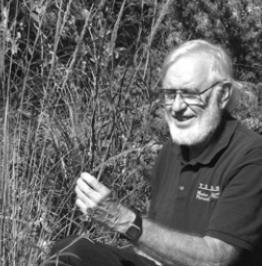The Dos and Don’ts for an Inviting Backyard Wildlife Habitat
There are lots of things a small landowner can do to make your backyard a better native habitat. There are also some things you should avoid doing if you want to encourage our native birds and small animals to visit your property where you can enjoy them. Here is a partial list.
Things you can do to help out our native critters:
Provide supplemental food. Lots of folks have bird feeders, most of which are filled with sunflower seeds or mixtures which attract a wide variety of seed eaters. But other kinds of feeders are also important to attract a wider variety of birds, such as thistle feeders for finches, suet feeders for woodpeckers, and sugar-water feeders for hummingbirds. Provide reliable, fresh water.
Provide reliable, fresh water. Many bird baths are poorly designed and are often allowed to go dry. Small shallow water sources that are constantly replenished, especially if they have dripping water, are best, and can be at ground level like their natural water sources are.
Be especially mindful of keeping feeders and water sources clean and filled full time—you don’t want the birds to get accustomed to your food and water and then not have any when you go away or during the winter when they especially need your help.
Berry-producing native vegetation can be very important as these plants attract birds that do not eat seeds, and winter berries are needed by insect eaters when insects are hard to come by. Berry-producing shrubs also provide cover and possible nest sites for birds.
A variety of native plants, from grasses and wildflowers to shrubs and vines to small trees all help provide the kind of habitat our songbirds are looking for. The greater the variety of vegetation, the greater the variety of birds you will see, and birds attract other birds.
Providing nest boxes certainly encourages those species that are cavity nesters to raise their families in your yard. Different birds require different size entrance holes, so put up a variety.
You can plant nectar-producing wildflowers and shrubs to provide hummingbirds and butterflies with their natural food source.
Like real estate, there are three key things to keep in mind when thinking about native habitats: diversity, diversity and diversity. Diversity in terms of species of vegetation, diversity in terms of plant size or age, and diversity in terms of food types available. Monocultures of even very desirable plants are not as useful as many different types.
Here are some things to avoid in your backyard habitat:
Don’t use outside pesticides. Not only will they kill beneficial insects such as pollinators, but all birds need insects as part of their diet for protein and to feed their young. Let the birds control the insects the natural way. Native plants evolved with our native insects without any pesticides, and they are still with us today. I don’t use pesticides, and I have never lost a native plant to insects.
Don’t plant non-native trees and shrubs, as most of these are not utilized by our native wildlife. Some can be toxic, and many can be invasive, which crowd out our native vegetation.
Non-native grass lawns are poor habitat for native critters and utilize inordinate amounts of water. Keeping such lawns to a minimum size and using the space that would otherwise just be lawn to establish more native vegetation will make your yard better native habitat and use less water.
Don’t place bird watering features or feeders near vegetation that can hide predatory cats. When these features are out in the open, the birds can more easily avoid the cats. Also, don’t place hummingbird feeders at a height that cats can reach.
Keep your cats indoors, and don’t feed stray cats in your yard. Dogs don’t seem to be very successful predators, but they can certainly keep some wildlife out of your yard.
The best thing about establishing a native habitat in your backyard is that you can enjoy it even without the wildlife, but wildlife complete the picture and make all the effort worthwhile. If you build it, they will come.
Until next time…
Jim Stanley is a Texas Master Naturalist and the author of the books “Hill Country Ecology,” “Hill Country Landowner’s Guide” and “A Beginner’s Handbook for Rural Texas Landowners.” He can be reached at <jstmn@ktc.com>. Previous columns can be seen at <www. hillcountrynaturalist.org>.

